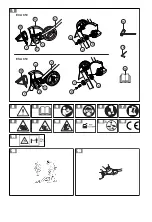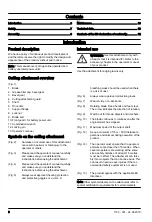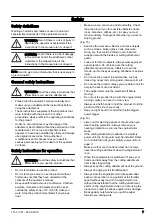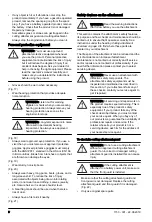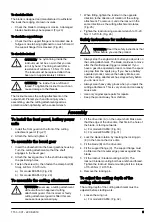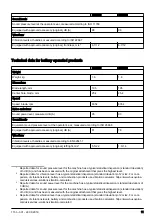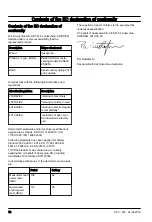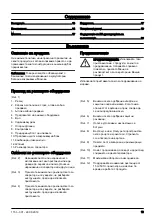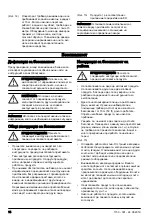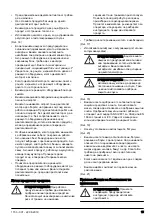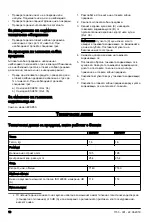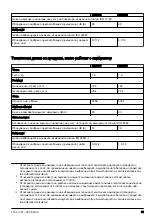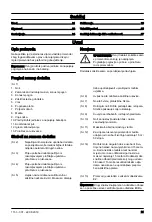
Safety
Safety definitions
Warnings, cautions and notes are used to point out
specially important parts of the operator's manual.
WARNING: Used if there is a risk of injury or
death for the operator or bystanders if the
instructions in the manual are not obeyed.
CAUTION: Used if there is a risk of damage
to the product and/or the attachment, other
materials or the adjacent area if the
instructions in the manual are not obeyed.
Note: Used to give more information that is necessary in
a given situation.
General safety instructions
WARNING: Read the safety instructions that
follow before you use the attachment.
• Please read the operator’s manual carefully and
make sure you understand the instructions before
using the attachment.
• These instructions supplement the instructions that
were included with the product. For other
procedures, please refer to the operating instructions
for the product.
• Under no circumstances may the design of the
attachment be modified without the permission of the
manufacturer. Do not use an attachment that
appears to have been modified by others and always
use original accessories. Non-authorized
modifications and/or accessories can result in
serious personal injury or the death of the operator
or others.
Safety instructions for operation
WARNING: Read the safety instructions that
follow before you use the product.
• Do not let children to use the product.
• Do not let anyone else to use the product without
first made sure that they have understood the
contents of the operator’s manual.
• Keep unauthorized persons at a distance. Children,
animals, onlookers and helpers should be kept
outside the safety zone of 15 m (50 ft) while you
work. Stop the product immediately if anyone go
near.
• Make sure you can move and stand safely. Check
the area around you for possible obstacles (roots,
rocks, branches, ditches, etc.) in case you must
move suddenly. Take great care when you work on
sloping ground.
(Fig. 15)
• Examine the work area. Remove all loose objects,
such as stones, broken glass, nails, steel wire,
string, etc. that could be thrown out or become
wrapped around the blades or cutting attachment
guard.
• Look out for thrown objects. Always wear approved
eye protection. Do not lean over the cutting
attachment guard. Stones, rubbish, etc. can be
thrown up into the eyes causing blindness or serious
injury.
• Do not use the product in bad weather, such as
dense fog, heavy rain, strong wind, intense cold, etc.
• Do not use the product unless you are able to call for
help in the event of an accident.
• The engine/motor must be switched off before
moving.
• Do not put the product down with the engine/motor
running unless you have it in clear view.
• Always use both hands to hold the product. Hold the
product at the side of your body.
• Use your right hand to control the throttle trigger/
power trigger.
(Fig. 16)
• Listen out for warning signals or shouts when you
wear hearing protection. Always remove your
hearing protection as soon as the engine/motor
stops.
• If the cutting attachment is attached to a battery
power unit, the front guard must be installed. Refer
To install the front guard, battery power units on
page 9
.
• Make sure that your hands and feet do not come
near the cutting attachment when the engine/motor
is on.
• When the engine/motor is switched off, keep your
hands and feet away from the cutting attachment
until it has stopped fully.
• Always keep the cutting attachment near the ground.
• Always do edging at full throttle/speed.
• Always slow the engine/motor to idle speed after
each work operation. Long periods at full throttle/
speed without any load on the engine/motor (i.e
without the resistance that the cutting attachment
exerts on the engine/motor when you are using the
product) can lead to serious engine/motor damage.
• Be especially careful when you pull the edger
towards you during work.
1153 - 001 - 22.08.2019
7


